| Barbarigo | |
|---|---|
 | |
| Country | |
| Founded | 9th century |
| Titles | Doge of Venice |
| Dissolution | 1843 |
The Barbarigo were a patrician, noble Venetian family, whose members had an important role in the history of the Republic of Venice.
| Barbarigo | |
|---|---|
 | |
| Country | |
| Founded | 9th century |
| Titles | Doge of Venice |
| Dissolution | 1843 |
The Barbarigo were a patrician, noble Venetian family, whose members had an important role in the history of the Republic of Venice.

The family originated from the Istrian area (according to the tradition, their ancestral place was Muggia, near Trieste). Also according to the family legend, in 880 AD one Arrigo won a battle against Saracen pirates and returned victoriously home with the beards (barba in Italian) of the defeated enemies, thus originating the family name Barbarigo and the coat of arms, representing six beards.
The Barbarigo were among the most influential Venetian families and have generated bishops, cardinals and patriarchs, including Gregorio Barbarigo, who was born in the Palazzo Barbarigo Minotto in 1625. In 1955, the Barbarigo founded the first church of Santa Maria del Giglio, known as Santa Maria Zobenigo at the time.
The family remained part of the Venetian patricians after the Serrata del Maggior Consiglio in 1297.

Two members of the family became doges of Venice. The first, Marco, ruled the Republic in 1485-86 and was the first Doge to be crowned on the Giants Staircase of Palazzo Ducale. His reign was so short due to a fatal wrangle he had during a senate meeting with his brother and successor, Agostino. Agostino Barbarigo reigned from 1486 until 1501, the period in which Catherine Cornaro, queen of Cyprus, donated her kingdom to Venice. He introduced the habit of kissing the Doge's hand.
The Barbarigo family died out in 1843 with Giovanni Filippo Barbarigo, who died childless. [1]

- all these are on the Grand Canal of Venice

Giovanni Battista Tiepolo, also known as GiambattistaTiepolo, was an Italian painter and printmaker from the Republic of Venice who painted in the Rococo style, considered an important member of the 18th-century Venetian school. He was prolific, and worked not only in Italy, but also in Germany and Spain.

Leonardo Loredan was a Venetian nobleman and statesman who reigned as the 75th Doge of Venice from 1501 until his death in 1521. As a wartime ruler, he was one of the most important doges in the history of Venice. In the dramatic events of the early 16th century, Loredan's Machiavellian plots and cunning political manoeuvres against the League of Cambrai, the Ottomans, the Mamluks, the Pope, the Republic of Genoa, the Holy Roman Empire, the French, the Egyptians and the Portuguese saved Venice from downfall.

The Contarini is one of the founding families of Venice and one of the oldest families of the Italian Nobility. In total eight Doges to the Republic of Venice emerged from this family, as well as 44 Procurators of San Marco, numerous ambassadors, diplomats and other notables. Among the ruling families of the republic, they held the most seats in the Great Council of Venice from the period before the Serrata del Maggior Consiglio when Councillors were elected annually to the end of the republic in 1797. The Contarini claimed to be of Roman origin through their patrilineal descendance of the Aurelii Cottae, a branch of the Roman family Aurelia, and traditionally trace their lineage back to Gaius Aurelius Cotta, consul of the Roman Republic in 252 BC and 248 BC.
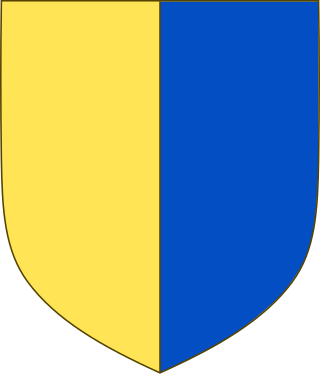
The House of Cornaro or Corner were a Venetian patrician family in the Republic of Venice and included many Doges and other high officials. The name Corner, originally from the Venetian dialect, was adopted in the eighteenth century. The older standard Italian Cornaro is no longer common in Italian sources referring to earlier members of the family, but remains so in English.

The Barbaro family was a patrician family of Venice. They were wealthy and influential and owned large estates in the Veneto above Treviso. Various members were noted as church leaders, diplomats, patrons of the arts, military commanders, philosophers, scholars, and scientists.

Agostino Barbarigo was Doge of Venice from 1486 until his death in 1501.
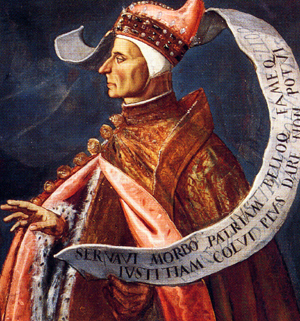
Marco Barbarigo was the 73rd Doge of Venice from 1485 until 1486. His nomination took place on a new staircase in the courtyard of the Doge's Palace, on an axis with the Campanile of St. Mark and the Porta della Carta.
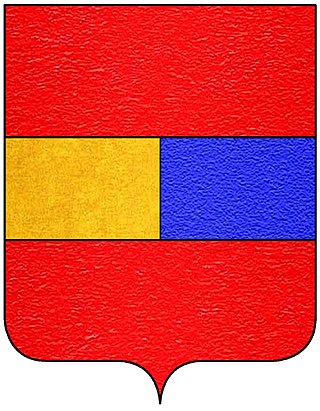
Balbi is the surname of the ancient noble Roman Family of Balbi where after the fall of the Western part of the Roman Empire and during the middle ages expanded in Venice, Genoa, Constantinople, Greece, Spain, Germany, Malta and other places. Balbi is one of the few surnames that has remained unchanged over the centuries and was one of the most famous prominent and wealthy families in Italy. Members of the Balbi family held high rank positions and noble titles such as Patrician, Senators, Dukes, Doge, Barons, Marchese, Lords e.t.c in the Maritime Republics of Venice and Genoa, the Eastern Roman and Holy Roman Empire of the German Nation, enganed in piracy, maritime trade, stock market and war activities where acquired wealth and power. Later in history many Balbi's participated in historical events such as revolutions, battles or served as Generals, Members of Parliament and Prime Ministers in many countries.

Gregorio Giovanni Gaspare Barbarigo was an Italian Roman Catholic cardinal who served as the Bishop of Bergamo and later as the Bishop of Padua. He was a frontrunner in both the 1689 and 1691 papal conclaves as he had distinguished himself for his diplomatic and scholastic service. He became noted as a scholar for his distinguished learning and as an able pastor for his careful attention to pastoral initiatives and frequent parish visitations.

The House of Grimani was a prominent Venetian patrician family, including three Doges of Venice. They were active in trade, politics and later the ownership of theatres and opera-houses.
Barbarigo may refer to:

The House of Loredan is a Venetian noble family of supposed ancient Roman origin, which has played a significant role in shaping the history of the entire Mediterranean. A political dynasty, the family has throughout the centuries produced a number of famous personalities: doges, statesmen, magnates, financiers, diplomats, procurators, military commanders, naval captains, church dignitaries, and writers.

The Palazzo Barbarigo Minotto is a 15th-century palace on the Grand Canal in Venice, northern Italy, next to the much larger Palazzo Corner. Built in the Venetian Gothic style, it was originally two palaces, Palazzo Barbarigo and Palazzo Minotto, later joined together. The Barbarigo palace was owned by the Barbarigo family for several centuries and was the birthplace of Gregorio Barbarigo, who once refused the Papal Crown. It was later owned by the Minotto and Martinengo families.

The House of Pisani is a Venetian patrician family, originating from Pisa, which played an important role in the historic, political and economic events of the Venetian Republic during the period between the 12th and the beginning of the 18th century.
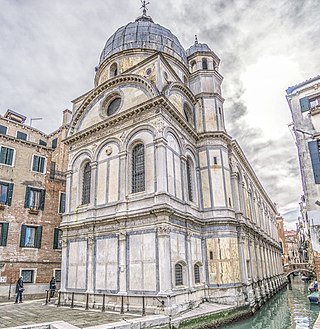
Venetian Renaissance architecture began rather later than in Florence, not really before the 1480s, and throughout the period mostly relied on architects imported from elsewhere in Italy. The city was very rich during the period, and prone to fires, so there was a large amount of building going on most of the time, and at least the facades of Venetian buildings were often particularly luxuriantly ornamented.
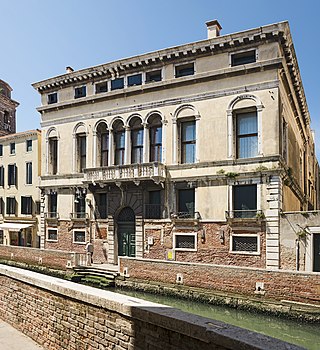
Ca Bembo is a grade-listed sixteenth-century palazzo in the parish of San Trovaso in the sestiere of Dorsoduro in Venice, Italy, noteworthy for a particularly large garden. It has, despite its name, no clear connection with the Bembo family, but a particularly strong association with one of the most prominent branches of the aristocratic Venetian family of the Barbarigo.

The Barbarigo Altarpiece or Enthroned Madonna and Child with Angel Musicians and Saint Mark, Saint Augustine and Doge Agostino Barbarigo is a 1488 oil painting on panel by Giovanni Bellini, now in the church of San Pietro Martire in Murano.
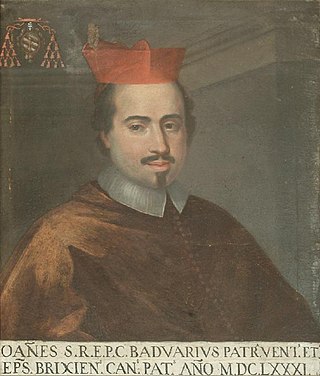
Giovanni Alberto Badoer or Gianalberto Badoaro was a Venetian Catholic cardinal who served as Patriarch of Venice and Bishop of Brescia.
This is an alphabetical index of people, places, things, and concepts related to or originating from the Republic of Venice. Feel free to add more, and create missing pages.
Loredan is a Venetian surname. The House of Loredan is an aristocratic Venetian family that included various doges of the Republic of Venice, and the surname is almost exclusively associated with the family. The surname most likely originated from the toponym Loreo, which itself originated from its Latin name Lauretum, meaning laurel. Another theory of the origin of the surname, though most likely legendary, is that it comes from the Latin epithet Laureati, given to ancestors of the Loredan family due to their historical glory in ancient Rome and the many victories they achieved in battles. The surname is spelled Loredano or Loredan in Italian, Lauredano or Lauredanus in Latin, and Lorentano (Λορεντάνο) in Greek, though it is also historically found as Lordas (Λορδᾶς) and Lordano (Λορδάνο). The feminine name Loredana, common in Italy and Romania, was likely inspired by the surname.